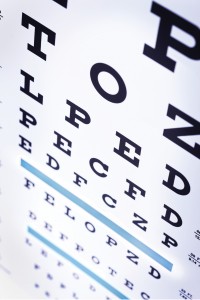 Vision loss is a common condition, as the World Health Organization notes that more than 285 million people across the globe suffer some type of visual impairment. Many people can effectively counter their vision problems with prescription lenses, but others may have a more significant issue, such as low vision.
Vision loss is a common condition, as the World Health Organization notes that more than 285 million people across the globe suffer some type of visual impairment. Many people can effectively counter their vision problems with prescription lenses, but others may have a more significant issue, such as low vision.
The Kellogg Eye Center defines low vision as a reduced level of vision that cannot be fully corrected with conventional glasses. Those with low vision have some useful sight and are not considered completely blind. However, low vision can interfere with performance of daily activities, and some people with this condition are classified as “legally blind.”
Symptoms of low vision include difficulty recognizing objects at a distance or problems with differentiating colors. Yet, not everyone dealing with these symptoms has low vision. Specialized testing can determine if a person has low vision or another condition.
Many conditions can impact sight and contribute to vision loss. Here’s a look at some of the more common ones.
• Glaucoma: A person with glaucoma may gradually lose peripheral vision. Early symptoms, such as a subtle loss of contrast, may be unnoticeable. Eventually, glaucoma may cause tunnel vision, which occurs when a person can only see through a small window.
• Macular degeneration: Macular degeneration is the leading cause of vision loss, affecting more than 10 million people in the United States alone, according to the American Macular Degeneration Foundation. The AMDF offers that macular degeneration is caused by the deterioration of the retina’s central portion, known as the macula. The macula is responsible for focusing central vision in the eye, and it contributes to one’s ability to read, drive a car, recognize faces or colors and see objects in fine detail.
• Retinal detachment: An increase of floaters or sudden flashes of light in vision may be indicative of retinal detachment or a tear in the retina. When caught promptly, a detached retina may be repaired. However, if left untreated and the detachment reaches the macula in the center of the retina, vision loss may be irreparable. The National Eye Institute says those with extreme nearsightedness, those who have had cataract surgery or those with a family history of retinal detachment are at a high risk.
• Diabetic retinopathy: Blurring or patchy vision loss can be a side effect of high blood glucose levels. Not all people with diabetes will develop vision problems, but it is common enough to warrant attention.
• Cataracts: According to The Mayo Clinic, a cataract is a clouding of the normally clear lens of the eye. Cataracts develop when aging or injury changes the tissue that makes up the eyes’ lenses. Clouded vision can make it more difficult to read or drive. Over time, cataracts may obscure vision so much that they require surgical repair.
Routine eye examinations can bring potential vision disturbances to light and facilitate faster treatment. Eye doctors also can make suggestions about lifestyle changes, including the use optical devices to improve sight.






